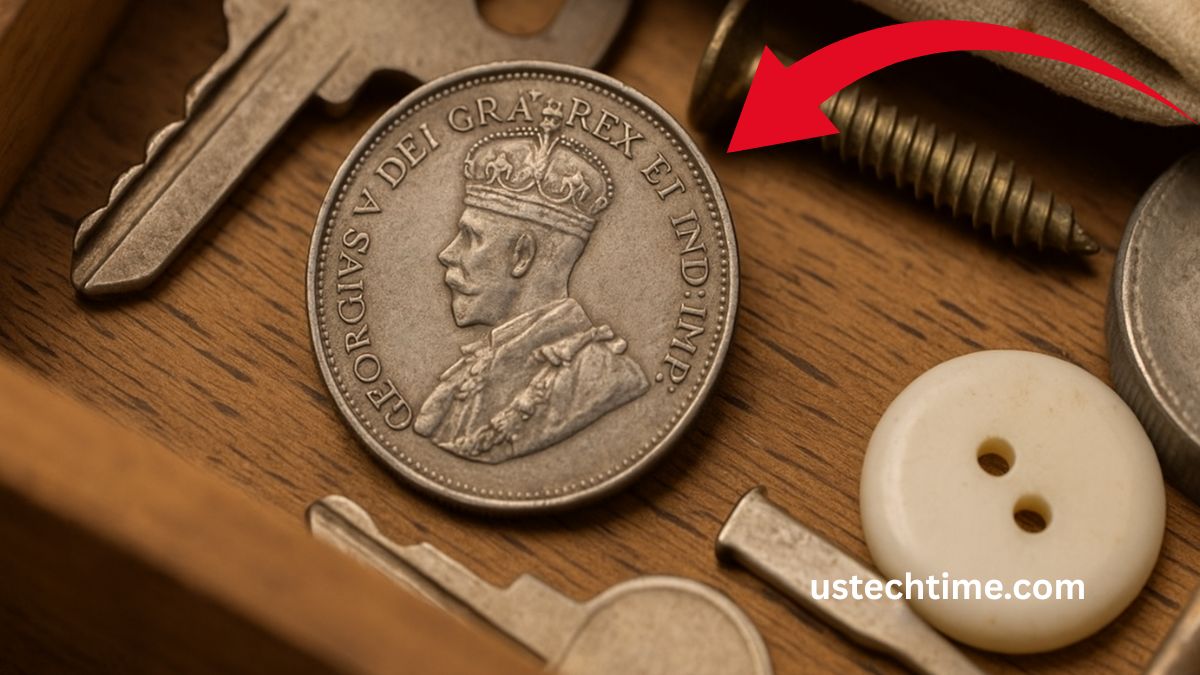Rare 1921 Canadian Nickel Found In A Kitchen Junk Drawer Now Worth Thousands
In an astonishing discovery, a rare 1921 Canadian 5-cent coin, often referred to as the “Prince of Canadian Coins”, was found tucked away in a kitchen junk drawer.
This unexpected find has sent ripples through the numismatic community, as the coin’s value is estimated to exceed $100,000, depending on its condition.
Historical Significance of the 1921 Canadian Nickel
The 1921 Canadian 5-cent coin holds a unique place in Canada’s numismatic history. Originally minted in 80% silver and 20% copper, it was the last of the small-sized silver nickels before the transition to larger nickel coins in 1922. Due to the change in coinage, most of the 1921 silver nickels were melted down, making surviving specimens exceedingly rare.
Why Is It So Rare?
- Limited Survivors: Out of the original mintage, it’s estimated that only 400 to 480 of these coins exist today.
- High Demand: Collectors highly prize this coin due to its rarity and historical significance.
- Market Value: Depending on the coin’s condition, values can range from $6,500 in very good (VG) condition to over $100,000 for coins in mint state (MS) grades.
Specifications of the 1921 Canadian 5-Cent Coin
| Feature | Details |
|---|---|
| Composition | 80% Silver, 20% Copper |
| Weight | 1.167 grams |
| Diameter | 15.5 mm |
| Obverse Design | King George V |
| Reverse Design | Crown above denomination and date |
| Mintage Year | 1921 |
| Estimated Survivors | 400–480 |
| Nickname | “Prince of Canadian Coins” |
Recent Discovery in a Kitchen Drawer
A Canadian resident recently stumbled upon this rare coin while cleaning out a kitchen junk drawer. Unaware of its value, the coin was initially considered a simple keepsake.
However, upon closer inspection and consultation with a numismatist, its true worth was revealed.
Authentication and Grading
For such a valuable coin, authentication is crucial. Professional grading services like PCGS or NGC can verify the coin’s authenticity and assign a grade, which significantly impacts its market value.
Market Value Based on Condition
| Grade | Estimated Value (CAD) |
|---|---|
| Very Good (VG) | $6,500 |
| Fine (F) | $10,000 |
| Very Fine (VF) | $15,000 |
| Extremely Fine (EF) | $25,000 |
| About Uncirculated (AU) | $50,000 |
| Mint State (MS) | $100,000+ |
Tips for Potential Discoverers
- Check Old Collections: Family heirlooms, old coin collections, or forgotten drawers might house valuable coins.
- Consult Experts: If you find an old coin, consult with a professional numismatist or a reputable coin dealer.
- Avoid Cleaning: Cleaning a coin can reduce its value. Always seek expert advice before attempting any restoration.
The discovery of a 1921 Canadian 5-cent coin in a kitchen drawer serves as a thrilling reminder of the hidden treasures that might be lurking in our homes.
With its rich history and significant value, this coin is a prized possession for collectors and a symbol of Canada’s numismatic heritage.
FAQs
Why is the 1921 Canadian nickel called the “Prince of Canadian Coins”?
Due to its rarity and historical significance, the 1921 Canadian 5-cent coin has earned the nickname “Prince of Canadian Coins” among collectors.
How can I authenticate a rare coin?
Professional grading services like PCGS or NGC can authenticate and grade coins, providing certification of their legitimacy and condition.
Is it safe to clean old coins?
It’s generally advised not to clean old coins, as cleaning can damage them and decrease their value. Always consult with a professional before attempting any cleaning.

